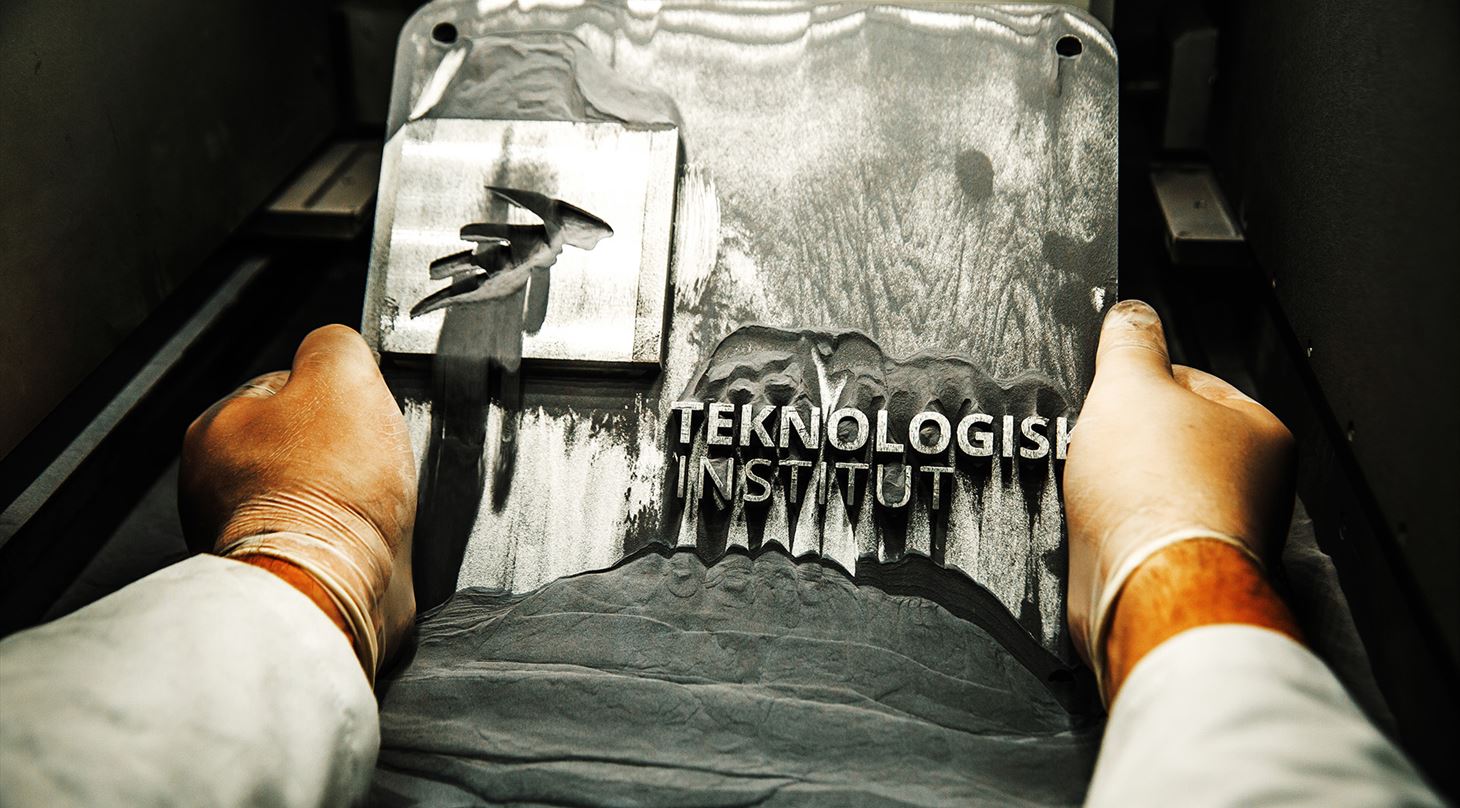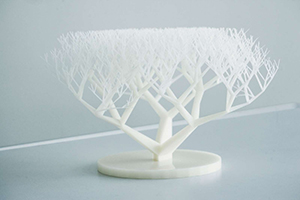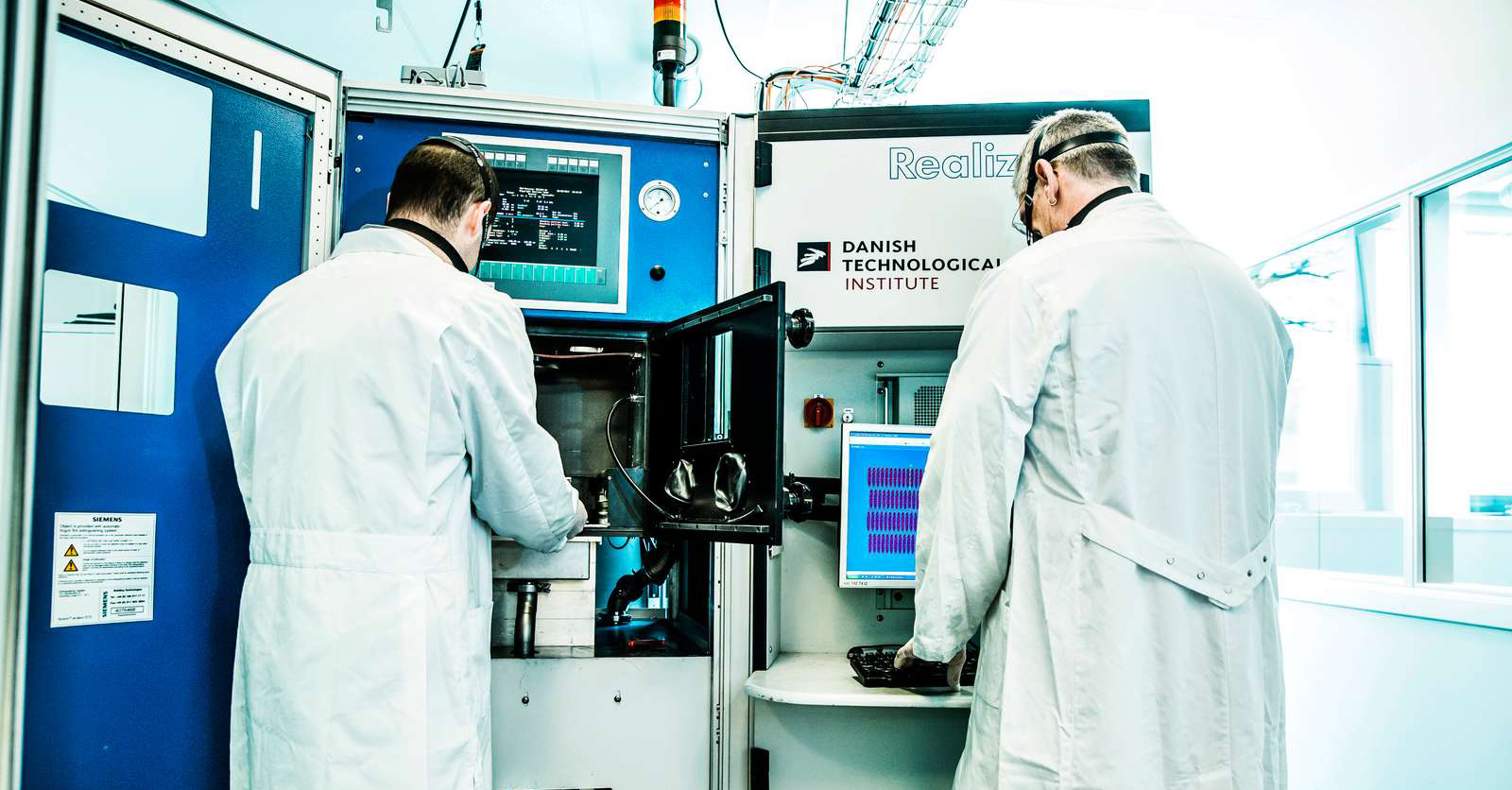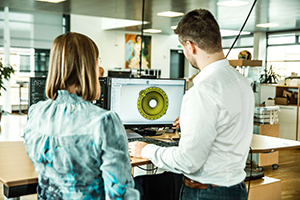
30 years as a front runner in additive manufacturing
In 1989, the Danish Technological Institute purchased its first 3D printer, because the technology showed an exciting potential in relation to product development and prototypes, which was also one of the focus areas of the institute at that time. Since then, additive manufacturing has evolved tremendously, and 30 years later the technology is now making its industrial breakthrough in Denmark - and the Danish Technological Institute is still at the forefront of the development with the opening of the Center for Industrial 3D Printing.
The story of additive manufacturing at the Danish Technological Institute started as early as 1988, when the institute started reading about the technology, which was first shown at a trade show in the US in 1987. This immediately sparked an interest as additive manufacturing was seen as an exciting technology in relation to product development.
In 1988, the Danish Technological Institute had a knowledge acquisition project with the possibility of sending people out into the world to acquire knowledge about the latest technologies. In this context, the institute sent a man to the United States for six months, where he gained insight into the various emerging additive manufacturing technologies - among other things SLA (Stereolithography), which can still be found at the Danish Technological Institute today. In fact, it was the domestic industry represented by e.g. LEGO and Danfoss, who helped fund this knowledge acquisition.
In 1989, BIBA in Germany and SINTEF in Norway among other initiated an EU project in the field of additive manufacturing, and when they heard that the Danish Technological Institute was already investigating the technology, the institute joined as project manager. The project, called 'Instant Cam', was to clarify what the additive manufacturing technology could be used for, and this was when the Danish Technological Institute purchased the first 3D printer, which was in fact one of the first printers in Europe - only Electrolux in Sweden and BIBA had bought one before.
Great curiosity about the new technology
From there, things evolved, and there were a lot of visits to the Danish Technological Institute from companies and universities who wanted to hear about what was happening in this field, just as the institute joined several EU projects concerning additive manufacturing. Bent Mieritz, who was Head of Product Development at the Danish Technological Institute back then, was even put in charge of a joint European initiative - Concerted Action - focusing on additive manufacturing and looking at where the projects in this field overlapped, and where they could benefit from each other. So already back then, the Danish Technological Institute was at the forefront of developments in additive manufacturing.
Characteristic of the first types of printers was that they were liquid printers, so it was really a molding process where a laser beam was sent into an acrylic liquid, causing the liquid to harden up to a subject where the laser hit.
- In fact, the stories from the United States indicate that the technology was actually developed by mistake, as is often seen in some of the great inventions - where you suddenly discover something that should not happen at all, but which proves to be valuable, says Bent Mieritz, who is still active as senior specialist at the Danish Technological Institute.
 Invaluable help in product development
Invaluable help in product development
At the Danish Technological Institute, we started working with additive manufacturing because it was a great tool in product development. With this technology, you could draw something in 3D and then have the item made in a physical form that could be used as a decision-making tool which people could gather around and evaluate to see if all the details were as they should be. So already at that time, it was an unrivaled decision-making tool in product development - and it still is.
Initially, additive manufacturing was mainly used for models in the product development phase. The acrylic material was not very good, so if you dropped an item on the floor or bent it a little, it would break. Along the way, the materials started getting better, making them suitable for prototypes, where you could also test different functions on the item.
Reducing development time
One of the good cases from the early years of additive manufacturing was a major product development job for Bang & Olufsen, who was developing a new radio which had to be made using 3D CAD and additive manufacturing. The Danish Technological Institute became involved in the additive manufacturing part and made more than 100 models in the process, and Bang & Olufsen subsequently found that their development process had been reduced from 3 to 1 year with this approach.
- Overall, the market was positive about the technology and wanted to test additive manufacturing in many different areas to find out if it could be used and how to use it. But when we started with the technology at the Danish Technological Institute, we did not know whether there was a market at all, other than the fact that it was a good tool for product development, says Bent Mieritz.
So, the willingness to test the technology was there from the start, and then you had to accept that the surfaces were not of the best quality - because they were built in steps and the tolerances were not so accurate at the time.
- But if we could get an item and put it into a product and see if it worked, then it didn't matter that the surfaces were not as good if they were not visible, says Bent Mieritz.
In terms of product development and reduction of development time, the additive manufacturing technology really moved something from the start, and before the turn of the millennium, this considered a huge achievement. A major possibility in this regard was also that you could send 3D-printed models to the foundries, who could then use them in their normal casting processes - so instead of waiting 3-4 weeks for a metal item, you could get it in one week.

From prototype to production
Since the turn of the millennium, additive manufacturing has come a long way, and the last 10 years in particular have been characterized by a shift from prototype to production technology. Today, there are numerous finished products being 3D-printed, and the challenges look different than in 1989, when there were completely different requirements for printers, components, quality assurance, and price.
The biggest challenges - or barriers if you will - when asking the broad market today, are quality and price, as well as knowledge and skills. In terms of quality and price, development is moving fast, and Jeppe Byskov, who heads the Center for Industrial 3D printing at the Danish Technological Institute today, has no doubt that additive manufacturing will be competitive with traditional manufacturing technologies on these parameters in a very short time - at least on the items that make sense to produce using additive manufacturing.
- It has become economically advantageous to 3D print more and more items, and the quality is as it should be, which is demonstrated by both the automotive and the aerospace industry. Knowledge and competencies, on the other hand, are a bottleneck, now that the additive manufacturing technology is going to be implemented in the industry – to a lot of people, the technology is still brand new. Fortunately, there are many educational opportunities in this field, and many have spotted need, so we’ll get there for sure, says Jeppe Byskov.
Entering the metal revolution
It is probably not an overstatement to call the introduction of metal 3D printing for the biggest game changer in additive manufacturing over the past 10 years. Metal printing offers some brand-new markets field, and it is getting cheaper and better all the time. Simultaneously, we are starting to see new standards in the field and people are getting better and better at taking advantage of the opportunities.
The fact that the Danish Technological Institute has 30 years of experience is quite unique in the additive manufacturing industry, and Jeppe Byskov experiences and uses the experience every day in his dialogue with customers.
 - We have experienced everything that can be experienced with additive manufacturing, so we can help customers avoid some of the mistakes that have already been made. In addition, we have an overview of this relatively overwhelming market, which has a huge number of technologies and applications, so we can Jeppe Byskov concludes.
- We have experienced everything that can be experienced with additive manufacturing, so we can help customers avoid some of the mistakes that have already been made. In addition, we have an overview of this relatively overwhelming market, which has a huge number of technologies and applications, so we can Jeppe Byskov concludes.
The next big step for additive manufacturing is for the technology to enter the broad manufacturing market, and here the new Center for Industrial 3D printing will help. As mentioned, additive manufacturing has previously been used primarily for prototypes and niche products, while some of the major industrial drivers have been, for example, the aerospace and automotive industries. But today, additive manufacturing is well under way to enter the broad industry, and this is where the really great potential lies for Danish companies - a potential we look forward to supporting at the Danish Technological Institute.